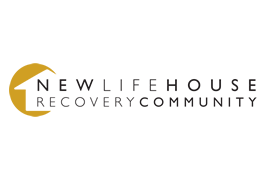Addiction- A Definition And Description
There are many definitions to define addiction but as such no comprehensive definition exists. As new drugs flood the market and different detrimental effects come to light, the definition keeps changing. National Institute on Drug Abuse defines addiction as a relapsing brain disease that has become a chronic issue characterized by compulsive drug use, despite harmful consequences. Since drug use changes the structure and behavior of the brain, it is considered as a brain disease. Also the changes caused to brain by the drugs are long lasting and can lead to harm and self-destruction. It is a periodic or chronic intoxication produced by the regular or repeated consumption of alcohol or a drug natural or synthetic. The characteristics of drug addiction include a compulsive desire to continue consuming the drug and to procure it by any means. The addiction also creates a tendency to gradually increase the dose and thereby generate a psychological and a physical dependence on the drug.
Mechanism of Addiction
Drugs that cause addiction can be broadly classified as stimulants that cause psychical addiction, sedatives, opiate and opioids that cause psychical and physiological addiction.
Genetic Predisposition
Many theories of addiction have evolved that try to explain the process of drug addiction. By far genetic theory of addiction that separates the genetic and environmental factors of addictive behavior has gained quite some acceptance. Studies have shown that children born from alcoholic parents adopted into non-alcoholic families have a three to four fold increase in the rate of alcoholism suggesting that there is genetic predisposition to alcoholic addiction.
Exposure Theory – Biological Models
This model is based on the assumption that the gradual introduction of an addictive substance into the body at regular intervals will cause metabolic adjustments requiring sustained and increasing dosages of the drug in order to avoid withdrawal and this ultimately leads to addiction. This theory believes that addiction is a consequence of biology as opposed to conditioning.
Exposure Theory – Conditioning Models
This model is based on the assumption that if a drug is administered on a regular basis then the cumulative result of the reinforcement of drug administration causes drug addiction. The administered substance gains control over the user’s behavior.
Most Addictive Substances
The most addictive substances in the decreasing order of dependency are Heroin, Crack Cocaine, Nicotine, Methadone, Methamphetamine, Alcohol, Cocaine, Amphetamines, Benzodiazepines and a synthetic drug called GHB
Some of the physical symptoms that are caused by drug addiction are rapid weight loss, mood swings, fatigue, changes in sleep and appetite, cold, sweaty palms, tremors and vomiting. Social behavioral changes such as change in friends, paranoia, forgetfulness, problems at work, unprovoked violent behavior are commonly observed in a drug addict.




